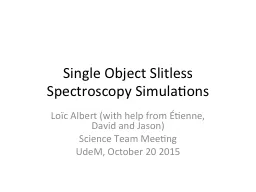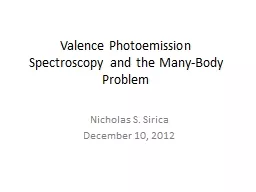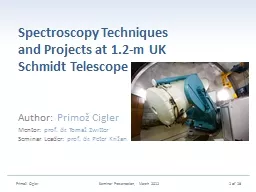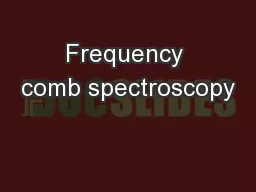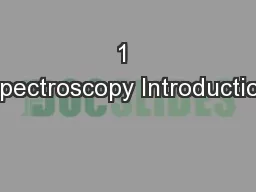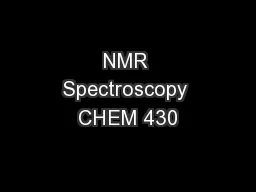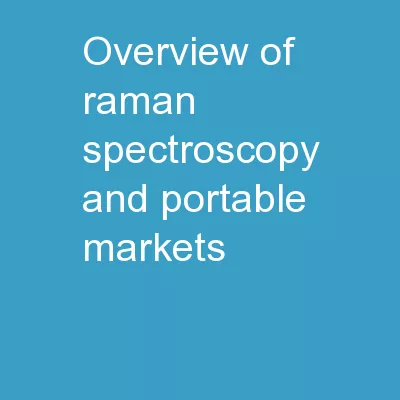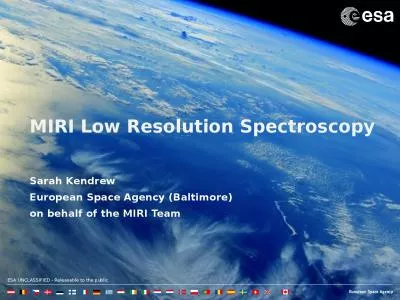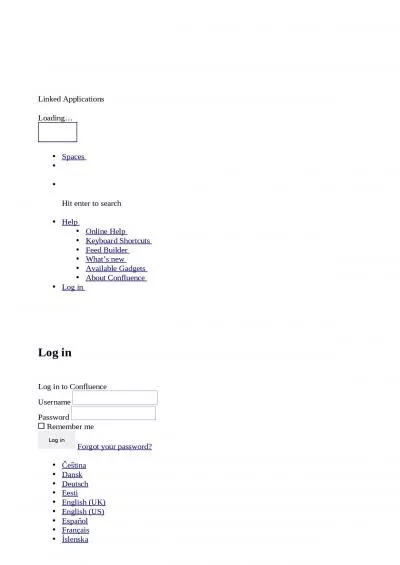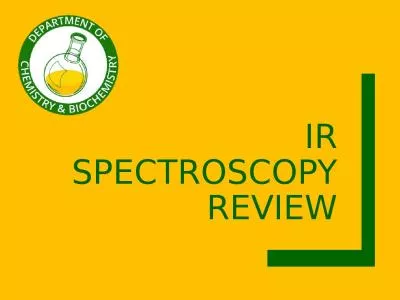PPT-Single Object Slitless Spectroscopy Simulations
Author : jane-oiler | Published Date : 2017-08-21
Lo ïc Albert with help from Étienne David and Jason Science Team Meeting UdeM October 20 2015 Simulation Objectives Test different trace extraction scenarios to
Presentation Embed Code
Download Presentation
Download Presentation The PPT/PDF document "Single Object Slitless Spectroscopy Simu..." is the property of its rightful owner. Permission is granted to download and print the materials on this website for personal, non-commercial use only, and to display it on your personal computer provided you do not modify the materials and that you retain all copyright notices contained in the materials. By downloading content from our website, you accept the terms of this agreement.
Single Object Slitless Spectroscopy Simulations: Transcript
Download Rules Of Document
"Single Object Slitless Spectroscopy Simulations"The content belongs to its owner. You may download and print it for personal use, without modification, and keep all copyright notices. By downloading, you agree to these terms.
Related Documents

